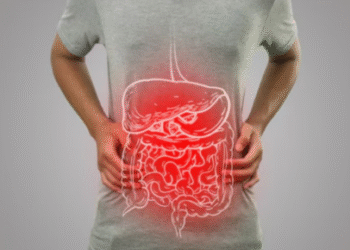1. Introduction to Food Allergies
Food allergies occur when the immune system mistakenly identifies a harmless food protein as a threat, leading to an allergic reaction. These reactions can range from mild to severe and understanding common food allergens is crucial for managing and preventing allergic responses.
2. Common Symptoms of Food Allergies
Symptoms of food allergies can include hives, swelling, digestive issues, and anaphylaxis. Recognizing these symptoms early can help in seeking prompt treatment and avoiding severe reactions.
3. The Big Eight Allergens
The majority of food allergies are caused by eight common allergens: milk, eggs, peanuts, tree nuts, fish, shellfish, soy, and wheat. These foods account for about 90% of all allergic reactions and are often referred to as “The Big Eight.”
4. Milk Allergies
Milk allergies are common, especially in children. Symptoms can include hives, stomach pain, vomiting, and in severe cases, anaphylaxis. People with milk allergies need to avoid all dairy products and foods containing milk proteins.
5. Egg Allergies
Egg allergies are typically seen in children and can cause symptoms like skin reactions, respiratory issues, and digestive discomfort. Both egg whites and yolks can trigger reactions, though egg whites are more commonly allergenic.
6. Peanut Allergies
Peanut allergies are one of the most severe and can lead to anaphylaxis. Symptoms include swelling, hives, difficulty breathing, and digestive issues. Strict avoidance of peanuts and peanut-containing products is necessary for those with this allergy.
7. Tree Nut Allergies
Tree nut allergies include reactions to nuts such as almonds, walnuts, cashews, and pecans. Like peanut allergies, tree nut allergies can be severe and require careful avoidance of all products containing tree nuts.
8. Fish Allergies
Fish allergies are common in both children and adults. Symptoms can range from mild to severe and include skin reactions, digestive issues, and anaphylaxis. People with fish allergies should avoid all types of fish and fish-based products.
9. Shellfish Allergies
Shellfish allergies, including reactions to crustaceans like shrimp, crab, and lobster, can cause severe symptoms. This allergy is often lifelong and requires strict avoidance of all shellfish and related foods.
10. Soy Allergies
Soy allergies are common in infants and young children. Symptoms include skin reactions, digestive problems, and respiratory issues. Soy is found in many processed foods, so careful label reading is essential.
11. Wheat Allergies
Wheat allergies can cause a range of symptoms from hives to anaphylaxis. It’s important not to confuse wheat allergies with celiac disease or gluten sensitivity. People with wheat allergies need to avoid wheat-containing foods and products.
12. Gluten Sensitivity and Celiac Disease
While not an allergy, gluten sensitivity and celiac disease involve adverse reactions to gluten, a protein found in wheat, barley, and rye. Symptoms include digestive discomfort, skin issues, and fatigue. A strict gluten-free diet is necessary for management.
13. Corn Allergies
Corn allergies are less common but can cause significant reactions, including hives, asthma, and anaphylaxis. Corn is found in many foods and products, making it challenging to avoid.
14. Sesame Seed Allergies
Sesame seed allergies are becoming more recognized and can cause severe reactions. Symptoms include hives, swelling, and difficulty breathing. Sesame is often found in bread, sauces, and snack foods.
15. Mustard Allergies
Mustard allergies can cause symptoms such as hives, respiratory issues, and digestive problems. Mustard is a common ingredient in many foods, including dressings, sauces, and processed meats.
16. Lupin Allergies
Lupin, a legume, is increasingly used in gluten-free and high-protein foods. Lupin allergies can cause symptoms ranging from mild to severe, and individuals with peanut allergies may be at higher risk for lupin allergy.
17. Meat Allergies
Allergies to meat, including beef, pork, and lamb, can cause reactions such as hives, digestive issues, and anaphylaxis. These allergies can sometimes be linked to tick bites, which can trigger alpha-gal syndrome, leading to red meat allergies.
18. Fruit and Vegetable Allergies
Some individuals may experience oral allergy syndrome, where fresh fruits and vegetables cause itching or swelling in the mouth. This is often related to pollen allergies and can usually be managed by cooking the fruits and vegetables.
19. Spice Allergies
Allergies to spices like garlic, cinnamon, and black pepper can cause skin reactions, digestive issues, and respiratory symptoms. Avoiding specific spices and using alternatives can help manage these allergies.
20. Sulfite Sensitivity
Sulfites are preservatives used in many foods and beverages, such as dried fruits and wine. Sensitivity to sulfites can cause respiratory issues, skin reactions, and digestive problems. Avoiding sulfite-containing foods is essential for those with sensitivity.
21. Chocolate Allergies
Chocolate allergies are rare but can cause symptoms like hives, digestive issues, and respiratory problems. These reactions are often due to other ingredients in chocolate, such as milk, nuts, or soy.
22. Food Additives and Preservatives
Some people may be allergic or sensitive to food additives and preservatives, including artificial colors, flavors, and preservatives like MSG. Symptoms can include skin reactions, headaches, and digestive issues.
23. Managing Food Allergies
Managing food allergies involves avoiding allergenic foods, reading labels carefully, and being aware of cross-contamination risks. Carrying emergency medications, such as epinephrine auto-injectors, is crucial for severe allergies.
24. Food Allergy Testing and Diagnosis
Food allergy testing, including skin prick tests and blood tests, can help identify specific allergens. Consulting an allergist for accurate diagnosis and management plan is essential for living safely with food allergies.
25. Conclusion: Living with Food Allergies
Living with food allergies requires vigilance and careful management. By understanding common allergens, recognizing symptoms, and taking preventive measures, individuals can lead healthy and safe lives. Consulting healthcare professionals for personalized advice and treatment is always recommended.
















